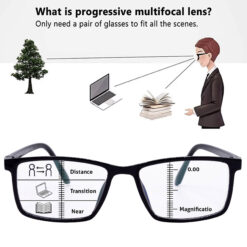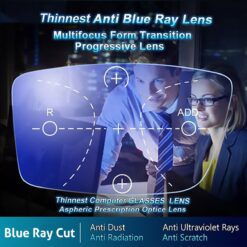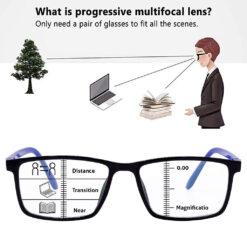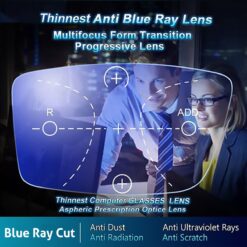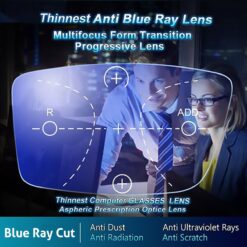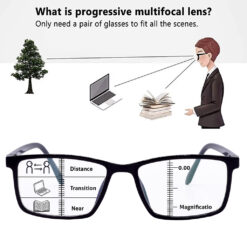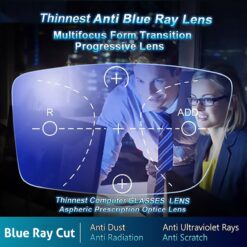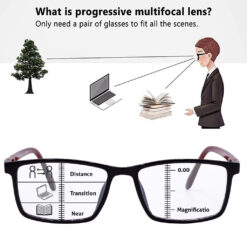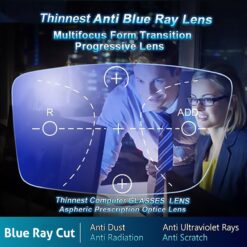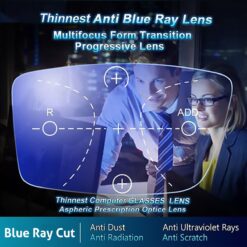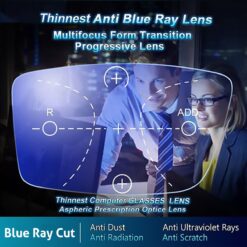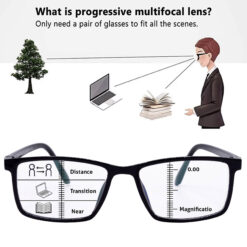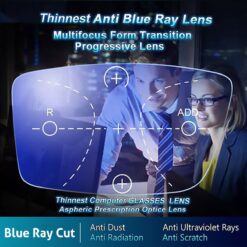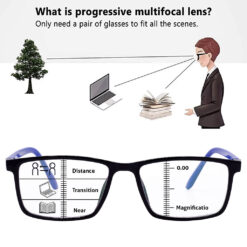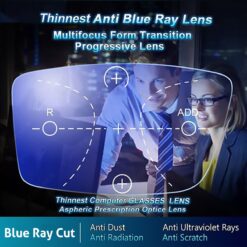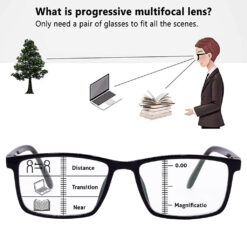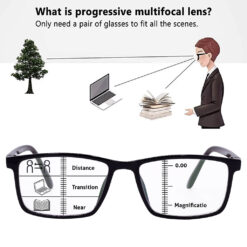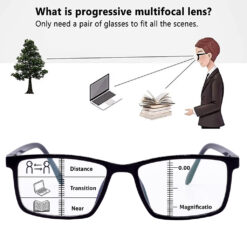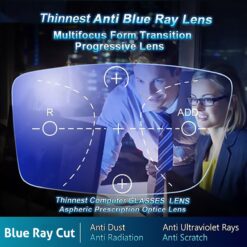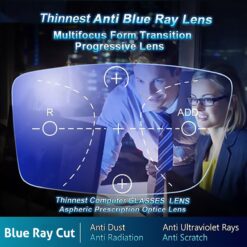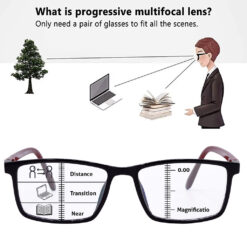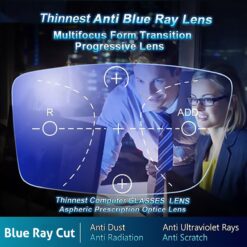Progressive Reading Glasses
Progressive Reading Glasses
Progressive Reading Glasses
Progressive Reading Glasses
Progressive Reading Glasses
Progressive Reading Glasses
Progressive Reading Glasses
Progressive Reading Glasses
Progressive Reading Glasses
Progressive Reading Glasses
Progressive Reading Glasses
Progressive Reading Glasses
Progressive Reading Glasses
Progressive Reading Glasses
Progressive Reading Glasses
Buy Blue Ray Cut Progressive Glasses Online – Your Complete Vision Solution
Have you ever felt your eyes burning after a long day staring at screens? You’re not alone. With 28% of Indians spending over 8 hours daily in front of digital devices, the need for proper eye protection has never been more critical. Blue ray cut progressive glasses offer the perfect solution, combining multi-distance vision correction with digital eye strain protection in one sophisticated package.
These revolutionary lenses represent a breakthrough in eyewear technology, addressing the modern challenge of presbyopia while protecting your eyes from harmful blue light emissions. Whether you’re reading a book, working on your laptop, or driving at night, blue ray cut progressive glasses ensure crystal-clear vision without the hassle of switching between multiple pairs of spectacles.
Understanding Blue Ray Cut Progressive Glasses
What Are Blue Ray Cut Progressive Glasses?
Blue ray cut progressive glasses combine two essential technologies: progressive lens design and blue light filtering coating. Progressive lenses provide seamless vision correction across three zones – distance, intermediate, and near vision – without visible lines that characterize traditional bifocals. The blue light filtering technology blocks approximately 40% of harmful blue light wavelengths between 400-450 nanometers, protecting your eyes from digital device emissions.
Unlike conventional reading glasses that only address near vision, progressive lenses offer a natural viewing experience that mimics how your eyes naturally focus. The upper portion corrects distance vision for activities like driving, the middle section handles intermediate distances perfect for computer work, and the lower area provides clear near vision for reading tasks. This three-in-one design eliminates the need for multiple pairs of glasses throughout your day.
How Blue Light Technology Works in Progressive Lenses
The blue light filtering technology integrated into progressive lenses works through specialized coatings or materials embedded directly into the lens structure. These filters selectively block high-energy visible (HEV) light while allowing beneficial light wavelengths to pass through. The result is reduced digital eye strain, improved visual comfort, and better sleep quality when using devices in the evening.
Research shows that blue light filtering lenses can reduce calculated phototoxicity by 10.6% to 23.6% while maintaining over 70% visual performance satisfaction among users. The coating appears nearly invisible to the naked eye, ensuring your glasses maintain their aesthetic appeal while providing crucial eye protection throughout your digital activities.
The Science Behind Blue Light Protection
Modern LED screens and digital devices emit concentrated blue light that can scatter more easily than other light wavelengths, making your eyes work harder to maintain focus. This increased effort leads to symptoms like dry eyes, headaches, blurred vision, and sleep disruption. Blue ray cut progressive glasses address these issues by filtering out the most harmful wavelengths while preserving color perception and visual clarity.
The filtering technology is particularly beneficial for Indian users, as studies indicate that 46% of IT professionals and 19% of students experience digital eye strain symptoms from prolonged screen exposure. By incorporating blue light protection into progressive lenses, you get comprehensive vision support that addresses both presbyopia and modern digital lifestyle challenges.
Why Blue Ray Cut Progressive Glasses Are Essential for Modern Living
Digital Eye Strain Statistics in India
The digital revolution has fundamentally changed how we use our eyes daily. Recent surveys reveal alarming statistics about screen usage in India: 84% of Indians admit to spending more time in front of screens compared to five years ago. More concerning is that 37% of patients surveyed at eye institutes suffer from dry eye symptoms directly caused by digital screen exposure.
A comprehensive study of 3,000 patients found that IT professionals averaged 6.3 to 8.3 hours of daily screen time, with 46% reporting significant digital eye strain symptoms. Students weren’t far behind, with 19% experiencing similar issues from online learning and research activities. These statistics underscore the urgent need for protective eyewear that can handle our screen-centric lifestyle.
Health Impact of Prolonged Screen Exposure
Extended screen time creates a cascade of eye health issues that go beyond simple fatigue. Computer Vision Syndrome (CVS) affects up to two-thirds of adults who regularly use digital devices, manifesting as dry eyes, burning sensation, blurred vision, headaches, and neck strain. The condition results from reduced blinking rates, forced accommodation of eyes, and exposure to blue light emissions from modern screens.
The impact extends beyond immediate discomfort. Prolonged exposure to blue light can disrupt circadian rhythms, making it harder to fall asleep and affecting overall sleep quality. For children and young adults, excessive screen time during critical developmental years may contribute to increasing myopia rates, with experts warning that half the global population could be at risk of near-sightedness due to digital eye strain.
Eye Health Concerns for Different Age Groups
Different age groups face unique challenges from digital eye strain. Young professionals between 25-45 years represent the highest risk category, often spending 8+ hours daily on computers while simultaneously experiencing early presbyopia symptoms. This dual challenge makes blue ray cut progressive glasses particularly valuable, addressing both vision correction needs and digital protection.
Senior citizens and homemakers, who averaged 4.6 hours of daily screen time according to recent studies, face additional challenges as their natural eye protection decreases with age. The crystalline lens naturally yellows over time, providing some blue light filtering, but this natural protection may be insufficient against concentrated digital emissions. Blue ray cut progressive glasses supplement this natural protection while addressing age-related vision changes.
Benefits of Blue Ray Cut Progressive Glasses
Three-in-One Vision Solution
The primary advantage of blue ray cut progressive glasses lies in their comprehensive approach to vision correction. Instead of juggling multiple pairs of glasses throughout the day, you get distance vision for driving and watching television, intermediate vision for computer work and cooking, and near vision for reading and detailed tasks – all in one elegant solution.
This seamless integration eliminates the “image jump” effect common with bifocal lenses, where objects appear to shift abruptly as your eyes move between different lens sections. Progressive lenses provide smooth transitions between focal zones, creating a more natural visual experience that closely mimics how younger eyes naturally accommodate different distances.
Digital Eye Strain Relief
Blue light filtering technology integrated into progressive lenses provides substantial relief from digital eye strain symptoms. Clinical studies demonstrate that 93% of users experience reduced digital eye strain when wearing blue light filtering lenses. The filtering effect reduces glare from LED screens, minimizes focusing effort, and helps maintain comfortable vision during extended computer sessions.
The anti-reflective properties of blue ray cut coatings reduce up to 50% of digital blue light reflections compared to standard coatings. This reduction translates to less squinting, fewer headaches, and improved concentration during work sessions. Users report being able to work longer hours with greater comfort, making these glasses invaluable for professionals who spend significant time on digital devices.
Enhanced Sleep Quality
One often-overlooked benefit of blue ray cut progressive glasses is their positive impact on sleep quality. Blue light exposure, particularly in the evening hours, suppresses melatonin production – the hormone responsible for regulating sleep-wake cycles. By filtering out harmful blue wavelengths, these glasses help maintain natural circadian rhythms, leading to better sleep onset and quality.
Research indicates that blue light filtering lenses can reduce melatonin suppression by 5.8% to 15.0%, helping users fall asleep more easily after evening screen use. This benefit is particularly valuable for individuals who work late hours or use devices for entertainment before bedtime, ensuring that necessary screen time doesn’t compromise restorative sleep.
Long-term Eye Health Protection
Beyond immediate comfort benefits, blue ray cut progressive glasses provide crucial long-term eye health protection. While research continues on the long-term effects of blue light exposure, these lenses offer a proactive approach to eye care by reducing cumulative exposure to potentially harmful wavelengths.
The protective coating also includes UV protection, shielding your eyes from both artificial blue light and natural UV radiation. This comprehensive protection is particularly important given that modern lifestyles involve both indoor screen time and outdoor activities, ensuring your eyes remain protected in all environments throughout your lifetime.
Who Should Consider Blue Ray Cut Progressive Glasses?
Working Professionals and IT Workers
IT professionals and office workers represent the primary demographic for blue ray cut progressive glasses, with studies showing that 46% of this group experiences significant digital eye strain symptoms. These individuals typically spend 6-8 hours daily in front of computers, often transitioning between different screen distances and document reading throughout their workday.
The intermediate vision zone of progressive lenses is particularly beneficial for computer work, positioned at the optimal distance for monitor viewing while maintaining clear focus on keyboards and documents. Blue light filtering reduces the harsh glare from LED monitors, while the progressive design eliminates the need to constantly adjust or remove glasses when switching between tasks.
Students and Online Learners
The shift to online education has dramatically increased screen time among students, with 19% now experiencing digital eye strain symptoms according to recent surveys. Students face unique challenges, spending hours on video calls, reading digital textbooks, and completing assignments on various devices throughout the day.
Blue ray cut progressive glasses address these challenges by providing clear vision for online lectures on distant screens, comfortable intermediate vision for laptop work, and sharp near vision for textbook reading and note-taking. The blue light protection is particularly valuable during late-night study sessions, helping maintain alertness while protecting sleep quality.
Homemakers and Senior Citizens
Homemakers and senior citizens, who average 4.6 hours of daily screen time, represent a growing demographic for blue ray cut progressive glasses. This group often uses devices for entertainment, communication with family, online shopping, and educational content, requiring comfortable vision across all distances.
Senior citizens benefit particularly from the progressive lens design, as presbyopia typically becomes more pronounced with age. The blue light protection helps reduce eye fatigue during extended viewing sessions, while the progressive design maintains dignity and aesthetics without the visible lines of traditional bifocals.
Reading Enthusiasts
Book lovers who have embraced digital reading platforms find blue ray cut progressive glasses invaluable for transitioning between traditional print books and e-readers or tablets. The near vision zone provides crystal-clear focus for reading, while blue light filtering reduces the harsh glare common with backlit e-reader screens.
These glasses also benefit individuals who enjoy both recreational reading and work-related research, allowing seamless transitions between physical documents, computer screens, and mobile devices without eye strain or the inconvenience of switching between different pairs of glasses throughout the day.
Progressive Lenses vs Traditional Bifocal Glasses
Seamless Vision Transition
The most significant advantage of progressive lenses over traditional bifocals lies in their seamless vision transition. Bifocal lenses create an abrupt change between distance and near vision zones, often causing a jarring “image jump” effect that can be disorienting and uncomfortable. Progressive lenses eliminate this issue through their gradual power change, providing smooth visual transitions that feel natural and comfortable.
This seamless design particularly benefits active individuals who frequently shift their gaze between different distances. Whether you’re driving and need to check your dashboard, or working at a computer and referencing printed documents, progressive lenses allow natural head and eye movements without the visual disruption common with bifocal lines.
Aesthetic Appeal and Modern Design
Progressive lenses offer superior aesthetic appeal compared to traditional bifocals, as they contain no visible lines that immediately identify the wearer as requiring multifocal correction. This design consideration is particularly important for professional settings where appearance matters, allowing wearers to maintain a modern, sophisticated look while addressing their vision needs.
The absence of visible lines also means that progressive lenses can be fitted into a wider variety of fashionable frame styles, from trendy rectangular designs to classic round shapes. This versatility ensures that your glasses complement your personal style while providing comprehensive vision correction.
Comfort and Adaptation Benefits
While progressive lenses may require a brief adaptation period, users typically find them more comfortable for extended wear once adjusted. The gradual power change reduces eye fatigue compared to the constant accommodation adjustments required with bifocals, particularly during activities involving frequent distance changes.
Modern progressive lens designs have significantly improved the adaptation process, with wider clear vision zones and reduced peripheral distortion. Most users adapt within 1-2 weeks of consistent wear, after which they find progressive lenses provide more natural and comfortable vision than traditional bifocal alternatives.
Choosing the Right Blue Ray Cut Progressive Glasses Online
Frame Selection for Progressive Lenses
Selecting the appropriate frame is crucial for progressive lens success. The ideal frame should have a minimum lens height of 28-30mm to accommodate all three vision zones properly. Frames that are too shallow may not provide adequate space for the near vision zone, limiting reading comfort and functionality.
Round, oval, and rectangular frame shapes work best with progressive lenses, as they provide the necessary depth for smooth power transitions. These shapes also tend to sit closer to the eyes, maximizing the effective viewing area and reducing peripheral distortion that can occur with poorly fitted frames.
Lens Quality and Coating Options
When purchasing blue ray cut progressive glasses online, lens quality should be your primary consideration. Premium progressive lenses offer wider clear vision zones, faster adaptation times, and superior optical clarity compared to entry-level options. Look for lenses from established manufacturers like Essilor, Zeiss, or Hoya, which offer proven track records in progressive lens technology.
Anti-reflective coatings are essential for optimal performance, reducing glare and reflections that can cause eye strain. Scratch-resistant and oleophobic coatings protect your investment while maintaining clear vision over time. Ensure the blue light filtering is integrated into the lens material rather than just surface coating for durability and effectiveness.
Price Range and Budget Considerations
Blue ray cut progressive glasses in India range from ₹1,200 for entry-level options to ₹25,000 for premium designs. Entry-level lenses from domestic brands (₹2,500-₹5,000) provide basic progressive functionality with blue light filtering, suitable for first-time users or budget-conscious buyers.
Mid-range options (₹7,000-₹15,000) from international brands offer improved optical quality, wider clear zones, and better blue light filtering technology. Premium lenses (₹20,000+) provide personalized fitting, advanced coatings, and superior optical performance, justifying the investment for users with demanding visual requirements or specific occupational needs.
How to Buy Progressive Glasses Online Safely
Prescription Requirements and Measurements
Purchasing progressive glasses online requires accurate prescription details and precise measurements. Your prescription should include sphere, cylinder, axis, and addition (ADD) values for both eyes, along with pupillary distance (PD) measurements. The ADD value is particularly crucial for progressive lenses, as it determines the reading power strength in the lower lens zone.25
Professional measurements include fitting height, which determines where the optical center sits in relation to your pupil. This measurement is critical for progressive lens success, as incorrect fitting height can cause discomfort and adaptation difficulties. Many online retailers now offer measurement guides or apps to help determine these values accurately.
Virtual Try-On Technology
Advanced virtual try-on technology has revolutionized online eyewear shopping, allowing you to see how frames look on your face before purchasing. These tools use facial recognition and augmented reality to provide realistic previews of different frame styles, colors, and sizes on your actual face shape.
While virtual try-on helps with frame selection, it cannot replace professional fitting for progressive lenses. Use these tools for initial frame selection, then ensure the retailer offers proper return policies and professional consultation services to verify proper fit and optical performance upon delivery.
Return and Exchange Policies
Reputable online eyewear retailers offer comprehensive return and exchange policies, typically providing 14-30 days for returns and exchanges. Look for companies that offer “satisfaction guarantees” specifically for progressive lenses, as adaptation can take time and some users may need adjustments or different lens designs.
Ensure the retailer provides customer support throughout the adaptation process, including adjustment services at local partner stores or guidance on proper lens use. Some companies offer remake policies if the initial progressive lenses don’t meet your visual needs, providing peace of mind for your investment.
Adapting to Your New Blue Ray Cut Progressive Glasses
Quick Adaptation Tips
Successful adaptation to progressive lenses requires patience and proper technique. Start by wearing your new glasses consistently throughout the day rather than switching between old and new eyewear. This consistent use helps your brain adapt to the new lens design more quickly than gradual introduction.
Practice proper head movement by pointing your nose toward objects you want to see clearly, rather than just moving your eyes. Use the upper lens area for distance vision, middle section for computer work, and lower area for reading. This conscious practice becomes automatic within days, leading to natural and comfortable vision.
Common Adjustment Challenges
Initial adjustment challenges may include slight dizziness, peripheral distortion, or difficulty judging distances. These symptoms are normal and typically resolve within 1-2 weeks of consistent wear. Walking down stairs may require extra caution initially, as depth perception adjusts to the new lens design.
Some users experience headaches during the first few days as their eye muscles adapt to the new focusing system. Taking regular breaks and gradually increasing wearing time can help minimize these symptoms. If challenges persist beyond two weeks, consult with an optometrist to verify proper fitting and prescription accuracy.
Professional Fitting Importance
While online purchasing offers convenience and cost savings, professional fitting remains crucial for progressive lens success. Consider having your final glasses verified by a local optometrist, especially if you’re new to progressive lenses or have specific visual demands.
Professional fitting ensures proper lens positioning, frame adjustment, and can identify potential issues before they become problems. Many online retailers partner with local optical shops to provide fitting services, combining online convenience with professional expertise for optimal results.
Price Comparison: Blue Ray Cut Progressive Glasses in India
Entry-Level vs Premium Options
Entry-level blue ray cut progressive glasses start around ₹2,500-₹5,000 and provide basic progressive functionality with blue light filtering. These options work well for first-time progressive lens users or those with simple prescriptions and minimal visual demands. Domestic brands like GKB Opticals and Nova offer reliable entry-level options with acceptable optical quality.
Premium options ranging from ₹15,000-₹25,000 provide superior optical performance, wider clear vision zones, and advanced blue light filtering technology. Brands like Essilor, Zeiss, and Hoya offer cutting-edge lens designs with personalized fitting parameters, faster adaptation times, and enhanced durability through superior coatings and materials.
Brand Comparison and Value for Money
Essilor leads the premium segment with Varilux series lenses (₹5,000-₹20,000) featuring W.A.V.E. Technology and Crizal anti-reflective coatings. These lenses offer excellent optical quality but command premium pricing. Zeiss progressive lenses (₹6,000-₹25,000) provide exceptional clarity with FreeForm technology and DuraVision coatings, targeting users seeking precision optics.
Mid-range brands like Hoya (₹4,500-₹18,000) and Nikon (₹4,000-₹17,000) offer balanced performance and pricing, providing advanced features at more accessible price points. These brands represent excellent value for users wanting premium features without the highest-tier pricing of European manufacturers.
Online vs Offline Pricing
Online retailers typically offer 20-40% savings compared to traditional optical shops due to reduced overhead costs and direct-to-consumer models. However, offline purchases include professional fitting, adjustments, and after-sales service that may justify higher costs for some users.
Consider the total cost of ownership, including potential remake costs if online purchases don’t fit properly, versus the comprehensive service provided by established optical retailers. Many users find the optimal approach combines online research and pricing with local professional fitting and service.
Caring for Your Blue Ray Cut Progressive Glasses
Cleaning and Maintenance Tips
Proper cleaning maintains the effectiveness of blue light filtering coatings and prevents scratches that can compromise optical quality. Use microfiber cloths and lens-specific cleaning solutions rather than household cleaners or paper towels, which can damage anti-reflective coatings. Clean lenses daily to remove oils, dust, and residue that can reduce clarity.
Rinse lenses with lukewarm water before wiping to remove abrasive particles, then apply cleaning solution and gently wipe in circular motions from center outward. Avoid using clothing, tissues, or paper towels, as these materials can create microscopic scratches that accumulate over time and reduce visual clarity.
Storage and Protection
Always store your glasses in a protective case when not in use, positioning them lens-up to prevent contact with case surfaces. Hard cases provide better protection than soft pouches, particularly for expensive progressive lenses with multiple coatings that require careful handling.
Avoid leaving glasses in hot environments like car dashboards or direct sunlight, as extreme temperatures can damage lens coatings and frame materials. When removing glasses, use both hands to maintain frame alignment and prevent temple loosening that can affect progressive lens positioning.
When to Replace Your Glasses
Progressive glasses typically require replacement every 2-3 years as prescriptions change and lens coatings wear down. Signs that replacement is needed include persistent headaches, eye strain returning despite consistent wear, visible scratches affecting vision, or changes in your vision needs or lifestyle.
Blue light filtering coatings may lose effectiveness over time, particularly with heavy use and cleaning. If you notice increased eye strain during computer work or difficulty sleeping after screen use, the blue light filtering may have degraded and require lens replacement rather than just prescription updates.
Future of Progressive Lens Technology
Emerging Technologies and Innovations
The progressive lens industry continues evolving with digital manufacturing techniques and personalized lens designs. Free-form technology allows lenses to be surfaced according to individual wearing parameters, considering factors like frame fit, head position, and visual preferences. This personalization results in wider clear vision zones and faster adaptation times.
Artificial intelligence and machine learning are being integrated into lens design, analyzing wearer data to optimize progressive corridors and minimize peripheral distortion. These advances promise even more natural vision experiences and reduced adaptation periods for new progressive lens wearers.
Smart Glasses Integration
The future may see blue light filtering and progressive correction integrated into smart glasses platforms, combining vision correction with digital displays and augmented reality features. These devices could automatically adjust blue light filtering based on ambient conditions and time of day, optimizing both vision correction and circadian rhythm protection.
Electrochromic technologies under development could allow progressive lenses to dynamically adjust their blue light filtering intensity, providing maximum protection during intense screen sessions while maintaining natural color perception during other activities.
Personalized Lens Solutions
Advancing biometric technology may enable fully personalized progressive lens designs based on individual eye anatomy, visual preferences, and lifestyle patterns. Eye tracking and accommodation measurement could inform lens design, creating truly customized optical solutions that eliminate adaptation periods and maximize visual performance.
Genetic factors affecting presbyopia progression and blue light sensitivity may also inform future lens designs, allowing proactive vision correction that anticipates individual aging patterns and provides optimal protection throughout the wearer’s lifetime.
Conclusion
Blue ray cut progressive glasses represent the pinnacle of modern eyewear technology, addressing the dual challenges of presbyopia and digital eye strain in our screen-dominated world. With 28% of Indians spending over 8 hours daily on digital devices and 37% experiencing dry eye symptoms from screen exposure, these glasses provide essential protection while offering the convenience of multi-distance vision correction.
The investment in quality blue ray cut progressive glasses pays dividends in improved comfort, productivity, and long-term eye health. Whether you’re a working professional battling computer eye strain, a student navigating online learning, or someone experiencing the natural vision changes that come with age, these glasses offer a comprehensive solution that grows with your needs.
When choosing blue ray cut progressive glasses online, prioritize lens quality, proper measurements, and reputable retailers with strong return policies. Remember that adaptation takes time, but the benefits of seamless vision and eye protection make the initial adjustment period worthwhile. Your eyes deserve the best protection available, and blue ray cut progressive glasses deliver that protection while maintaining the visual clarity and convenience you need for modern living.
FAQ Section
Q: How long does it take to adapt to blue ray cut progressive glasses?
A: Most people adapt to progressive lenses within 1-2 weeks of consistent wear. The adaptation period varies based on individual factors like age, prescription strength, and previous eyewear experience. Blue light filtering doesn’t typically affect adaptation time, as this technology is integrated seamlessly into the lens design.
Q: Can I wear blue ray cut progressive glasses all day?
A: Yes, blue ray cut progressive glasses are designed for all-day wear. The blue light filtering is optimized to block harmful wavelengths while maintaining color perception and visual clarity. Many users find they provide better comfort during extended screen sessions compared to regular progressive lenses.
Q: Are blue ray cut progressive glasses worth the extra cost?
A: For individuals spending 4+ hours daily on digital devices, the additional cost is typically justified by reduced eye strain, improved sleep quality, and potential long-term eye health benefits. The cost difference between regular and blue light filtering progressive lenses is usually modest compared to the overall lens investment.
Q: Do blue ray cut progressive glasses help with sleep problems?
A: Blue light filtering can help maintain natural circadian rhythms by reducing melatonin suppression caused by evening screen exposure. While not a cure for sleep disorders, many users report easier sleep onset after switching to blue light filtering lenses, particularly when using devices before bedtime.
Q: What’s the difference between blue ray cut progressive glasses and regular computer glasses?
A: Blue ray cut progressive glasses combine multi-distance vision correction with blue light filtering, while regular computer glasses typically only filter blue light with a single-distance prescription. Progressive versions are ideal for users needing both presbyopia correction and digital eye strain protection, eliminating the need for multiple pairs of glasses.

